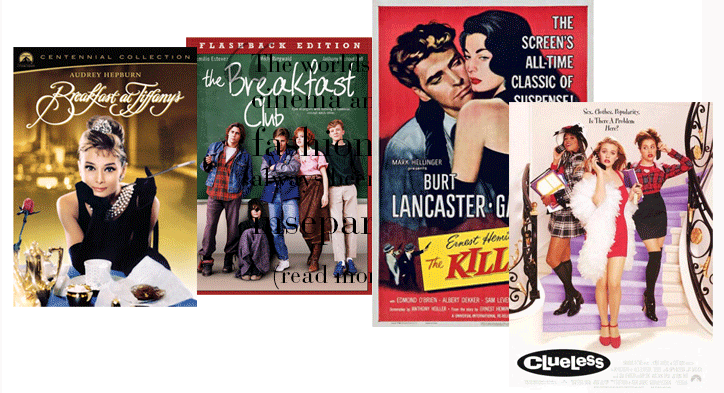The worlds of cinema and fashion have always been inseparable. The most iconic film images today (think Audrey Hepburn in “Breakfast at Tiffany’s” or Marilyn Monroe in “The Seven Year Itch”)
revolve just as much around the fashion as the stars themselves. Throughout history filmmakers have collaborated with fashion designers to create iconic looks, but films have also often influenced trends in the real world. Even today, designers, filmmakers and audiences draw upon their favorite films for style inspiration.
From the early ‘40s until the late ‘50s, film noir had a huge influence in defining style. Many films featured “femme fatales,” female characters who often used their beauty and sensuality for sinister purposes, which made popular a very specific style aesthetic.
“Femme fatale” style often intersected with ‘20s flapper style but added an element of danger and darkness — characters usually wore intricate, beaded dresses or flowing gowns complemented by dark lips, hair and eyes. Iconic looks include Louise Brooks in the 1929 silent film “Pandora’s Box” and Ava Gardner in the “The Killers” (1946).
Film noir style still has a great influence on fashion today, and many designers, such as Alexander McQueen and Jean Paul Gaultier, use elements of femme fatale style in their collections. Gothic style also draws heavily on film-noir fashion.
The ‘50s, ‘60s and ‘70s gave way to new styles and genres. With the sudden popularity of the romantic comedy and a crop of new actresses who were icons for women both in films and in the real world, fashion started playing an even larger role in cinema.
Marilyn Monroe became a role model for women and a sex symbol for men, and her images remained iconic to artists and designer labels like Andy Warhol and Dolce & Gabbana. Her most famous film, “Some Like It Hot” (1959) and “The Seven Year Itch” (1955) made famous her blonde curls, red lips and classic sultry style, a look women all over the world tried to emulate. Audrey Hepburn also rose in popularity around this time and remains one of the most recognizable actresses in history. Her little black dress in “Breakfast at Tiffany’s” (1961), designed by Hubert de Givenchy, is one of the most famous dresses in modern era. Hepburn’s other looks in the films “Roman Holiday” (1953) and “How to Steal a Million” (1966) encouraged women to copy her classic feminine style.
In the ‘80s and ‘90s, fashion in films began to be more accessible and relatable to the general public, especially influencing teens. Molly Ringwald of “The Breakfast Club” (1985) and “Sixteen Candles” (1984) sparked the trend of using clothes as a statement against conformity, becoming a teen-style icon. The famous pink dress in “Pretty in Pink” (1986), which she cut up and made her own, is one of the most iconic prom dresses of all time, still inspiring prom wear each year. “Clueless” (1995), with its over-the-top plaid suits, crazy hats and Alicia Silverstone’s iconic red minidress, have also served as examples for lasting style.
Recent films, including “Moonrise Kingdom” (2012), “The Perks of Being A Wallflower” (2012) and “(500) Days of Summer” (2009), have made popular a classic vintage aesthetic that draws on styles from earlier time periods and films, successfully translating to street style.
Today, film admirers and style lovers are privileged to be given such a variety of decades, genres and aesthetics to take their own modern interpretations on. Inspired dressers can pick and mesh styles to build their own vintage meets modern styles. And as times change, cinema will surely continue to reflect and influence fashion beyond the screen.
Deeksha Mehta is a contributing writer. Email her at [email protected].























































































































































